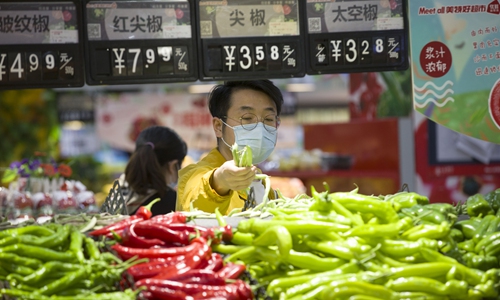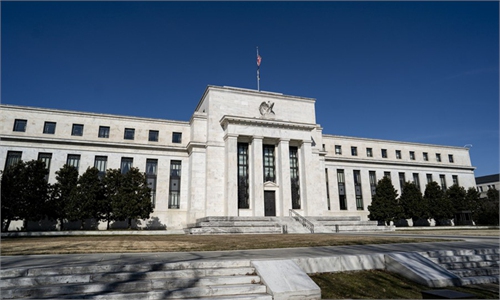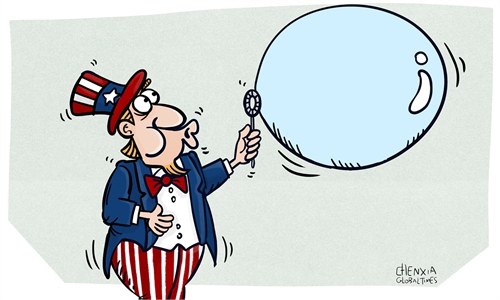
A consumer buys vegetables at a supermarket in Taiyuan, North China's Shanxi Province. Photo: cnsphoto
The highest inflation since 2008 in the US and the Federal Reserve's balance sheet hitting $8 trillion for the first time have combined to fuel fears of runaway inflation, with some market observers even suggesting that the US is approaching temporary hyperinflation.
As a spillover effect, the analysts said that there could be risks of imported inflation in China, though it should not be a big problem.
"China is an open country and a large trade partner in the world. Bulk commodity purchases support the development of China's manufacturing industry.
"Since the Fed increased the monetary aggregate by printing more money last year, international commodity prices have risen, which is bound to affect China's producer price index (PPI) and consumer price index (CPI)," Wang Xingping, a finance analyst, told the Global Times on Monday, hinting at a rising CPI in the coming months.
The prices of crude oil, natural gas and coal all rose by more than 30 percent in the first quarter of 2021, and agricultural prices have risen 20 percent and are close to a seven-year high, according to an outlook released by the World Bank in April.
For instance, the price of soybeans stood at $359.17 per metric ton last May. In May this year, the price was $643.92, an increase of 79.3 percent year-on-year.
According to research, about 21 percent of the year-on-year increase in global commodity prices was transmitted to China's PPI. As the transmission from the PPI to the CPI lags by two to three months, China's CPI in the first five months of this year remained relatively low, said Wang.
Analysts said that influenced by the pandemic, the supply of bulk commodities is insufficient, and labor and transportation costs are rising, leading to a sustained rise in commodity prices.
Ying Xiwen, deputy director of the Macro-economy Research Center at Academy of China Minsheng Bank, told the Global Times on Monday that domestic inflationary pressures will pick up in the second and third quarters.
"CPI growth is expected to pick up to the range of 1-2 percent, and the core CPI will gradually return to the range of 1-1.5 percent, reflecting the continued recovery of aggregate demand.
"Domestic upstream industrial products will continue to face upward pressure in the short and medium terms. Therefore, the PPI will hit a plateau in the second and third quarters, and start to fall in the fourth quarter," said Ying.
Analysts said that China may face imported inflation, but it won't be big problem. They also said that China's inflation will at the same time have an impact on the world.
Impacted by the pandemic, major manufacturing countries other than China are finding it difficult to recover quickly, and their dependence on Chinese manufacturing will remain. Therefore, a stronger yuan will translate China's inflation into global inflationary pressure, they said.


